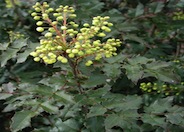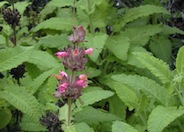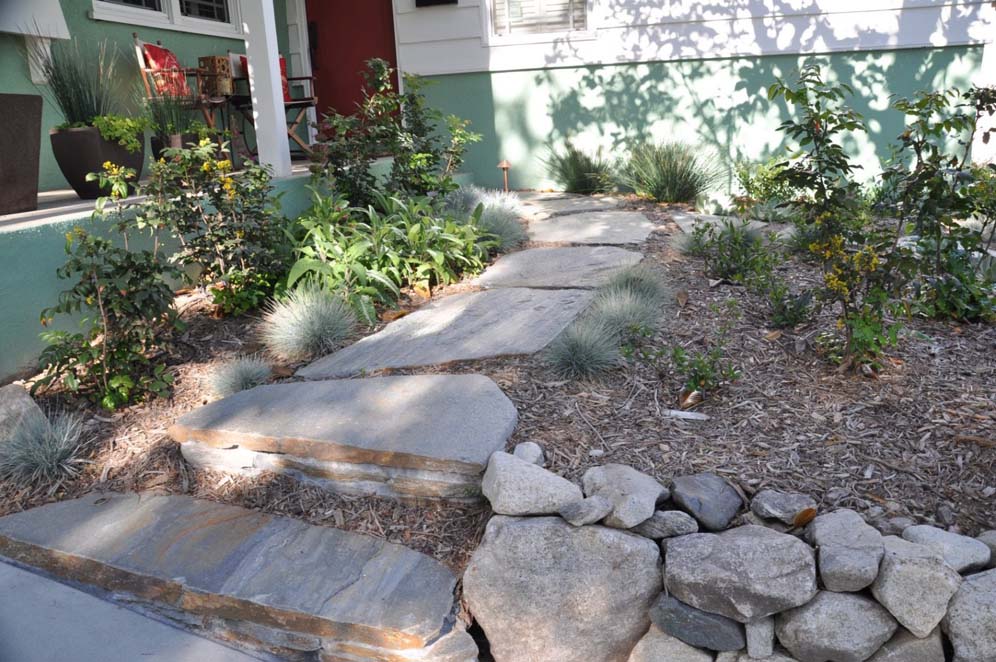
Common name:Spiny Rush
Botanical name:Juncus acutus
This native Rush grows naturally in moist alkaline soils especially in coastal salt marshes. As one of the larger native Rushes, growing to 3'-4' tall and 3'-4' wide, it can provide interest through form and structure in a natural garden setting. It is carefree-looking. The tips of the leaves are sharp so care should be taken when designing the landscape not to place this species close to walkways, etc. Tall grasses are highly combustible.

Common name:California Gray Rush
Botanical name:Juncus patens
Although a wetland plant, Juncus patens can tolerate fairly dry conditions. It will slowly clump to 2'-3' wide and a height of 2'-2.5'. There are many selections of this species available with different heights and widths. It is carefree, with little to no maintenance. It provides great upright structure to many styles of landscapes.

Common name:Oregon Grape
Botanical name:Berberis aquifolium
Exhibiting erect growth, this evergreen shrub grows to a height of 6'. The leaves are 4"-10" long, with 5-9 very spiny-toothed, oval leaflets that are 1.5" in length.

Common name:Hummingbird Sage, Pitcher Sage
Botanical name:Salvia spathacea
The extravagant leaves of this small clumping sage emit a perfectly sweet fragrance, which attracts hummingbirds. In the spring, the reddish pink flowering spikes become a deep fuchsia. It is a great plant for dry shade.
Compost for Healthy Soil and Plants
The natural world works in cycles. Everything is changing form and moving from place to place in an endless energy exchange system. The leaves and twigs that fall to the ground, not to mention other life forms that might die, decompose and combine with water, air and minerals of the soil to create a medium for future plants.
Click in the green box for more information
| Designer: Form LA Landscaping | Stone House 6 |
Photographer: GardenSoft |
Soils and Compost:
Incorporate compost 6" into your soil to retain water, reduce compaction, feed earthworms, and provide valuable nutrients to your plants.
Water Saving Tip:
Mulching and adding compost to soil can minimize evaporation and help soil absorb and store water.
Integrated Pest Management:
Attract, or buy beneficial insects such as ladybugs and lacewings to control pest outbreaks in your garden.
